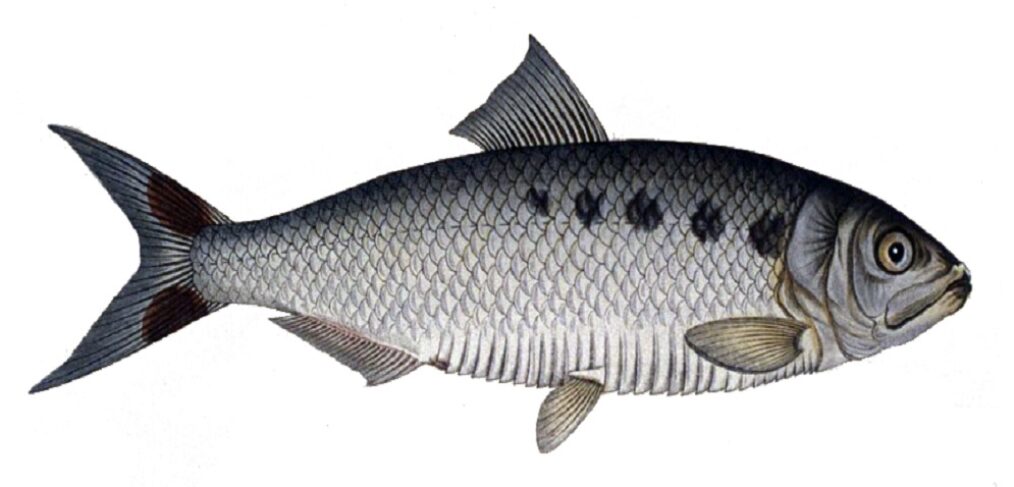
species of the week # 65 – allis shad
Who knows the International Shad Commission? No one today; it also existed for only two years. Founded in 1895, its goal was to counteract the decline of the allis shad stock. This was because complaints about the decline of the “poor man’s fish” in the Rhine had been mounting since 1860. The fish was also psychologically important for the population, because punctually at the beginning of May, people could count on the allis shad returning from the sea to its spawning waters on the Rhine, Moselle and Sieg. By then, at the latest, people knew that enough food would be available again until the next winter. The catch figures from 1852 show how often the allis shad was eaten: 23,000 animals were caught on the Rhine in a single day.
Efforts by the allis shad commission to selectively propagate them in so-called cribs were unsuccessful, and similar programs by the Prussian government were also discontinued in 1901.
| Distribution status | Extinct in Rhineland-Palatinate |
| Remaining deposits | Rhine in Northrhine-Westphales, Southeasteurope |
| Last sighting in Rhineland-Palatinate | 1900 |
| Habitat | Seas and shallow, large rivers with strong currents
|
| Threat | Catch, barriers, shipping, water pollution, gravel mining |
Between March and July you have the best chance to encounter shad. Loud splashing on gravelly stretches of river on balmy May and June nights may be an indication of spawning shad. Shad can be seen year-round in estuaries and coastal waters.
A relative of the herring, the allis shad reaches a stately size of 40 to 70 centimeters and weighs up to four kilograms. The shiny metallic body is silvery blue-green on the back, sides and belly are silvery white and flattened on the sides. A deeply incised caudal fin and one to five dark spots behind the gill cover are characteristic.
The allis shad is one of the so-called anadromous migratory fish and spends most of its life in the sea. Beginning in March, when temperatures in the sea and rivers rise above 11°C, shad congregate in estuaries and migrate up rivers. There, unlike other migratory fish species, they can adapt to fresh water. They cover great distances, up to 700 kilometers, during their migration. Their destination is moderately flowing gravelly river sections, such as those found on the inner bends, overflowing gravel banks or mouths of tributaries. There they spawn.
The catch of allis shad was of immense economic importance to fisheries and restaurants along the Rhine. Rigorous overfishing, together with the construction of migration barriers, increasing water pollution and river regulation, led to the decline of the allis shad population. Particularly dramatic was the fishing of females prior to spawning, as this resulted in the absence of offspring. On the Rhine and in most of its former range, the allis shad became extinct by the middle of the 20th century.
Today, populations have still not recovered. In 2007, the European Life+ program started to reintroduce allis shad into the Rhine. Between 2008 and 2015, over eight million allis shad larvae were released in the Rhine catchment areas of Hesse and North Rhine-Westphalia. In 2014, juveniles were found in Philippsburg near Karlsruhe, suggesting that allis shad are reproducing in the Rhine. In June 2021, 500,000 allis shad larvae were also released into the Rhine in Vallendar near Koblenz in Rhineland-Palatinate. This is because it is hoped that the allis shad will return in the long term in Rhineland-Palatinate as well.
Political necessity:
– Increasing the passability of rivers
– Renaturation of rivers
– Protecting spawning areas
Click here for many more exciting species of the week
Image: By Krüger – Bibliothèque nationale de France, Public domain, https://commons.wikimedia.org/w/index.php?curid=10375377
